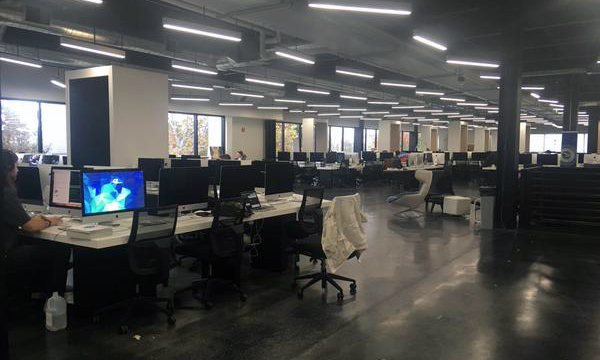The nonprofit software engineering school 42 founded and funded by billionaire businessman Xavier Niel is taking a unique approach to education. The organization aims to free students from the isolation and economic burdens associated with higher education institutions in the U.S. Aspiring students participate in an intensive training called Piscine, in which they code for four weeks in collaboration with other candidates. Following successful completion of the program, students gain full-time access to the entirety of 42’s curriculum — available as a flexible and self-paced 3-5 year program where students can broadly explore their interests. Students can also opt for a one-year intensive program called Starfleet Academy, which follows a set curriculum. In both programs, they collaborate with their peers and co-create an “educational commons” of sorts, teaching and learning from each other without oversight by teachers or professors. “There’s not a lot of overview by staff because that influences power dynamics,” says Stacey Faucett, writer and content coordinator at 42. “That would make things not unfold naturally at all.”
The “house” of 42 consists of a large shared open computer lab space equipped with all the resources that students need. The space never closes and there are no formal courses. Rather 42 staff plays a background role in offering operational support and facilitating the “gamified” approach students take to learning. The organization’s website describes this process as being “organized according to a dependency tree that the ‘student-players’ can go through in order to earn levels in different competencies, at their own pace.” Essentially, students go on educational learning “quests” individually and collectively as they learn coding and other skills.
“It’s like a skill tree from a video game where you have the first couple of projects, you do the basic things and then once you get to like the third project, you can go [on] all these different paths,” says Reed Jocic, a current student at 42. This model integrates collaboration into the heart of 42’s design and practice, he says. Collaboration “is the biggest part of the school,” Reed says. “For any problem, you can go to pretty much any student and say, ‘Hey, I see you’ve done this problem. Can you talk me through something with this? Can you help me out with this?’ Everyone helps each other out with everything.”
Mutual support is not only emphasized but required for progression, as advancement within 42’s system is measured through the accruement of “experience” points, which comes from students completing peer-to-peer corrections through each line of code once a project is completed. Students are by no means limited by 42’s academic projects either, and are encouraged to submit project ideas to staff and implement them with other students.
This emphasis on collaborative process, creativity, and open-endedness of the program design itself is reflected back in the impact the school has on its students. As Reed reflects on his own experience: “You fail all the time in the Piscine and normally as a cadet,” he says. “But they teach you to view it as a learning experience. … It would have been great to get it right the first time, but you learn something from it and then you incorporate that into your next project, and you get better and better. I think the best way to learn is through failure.” Students have gone on to intern and work at various companies in Silicon Valley, including LinkedIn, Apple, and Microsoft. Having a low-stakes, supportive environment with the freedom to fail pushes students towards creatively testing what can be achieved cooperatively.
Header image by Emily Bender









